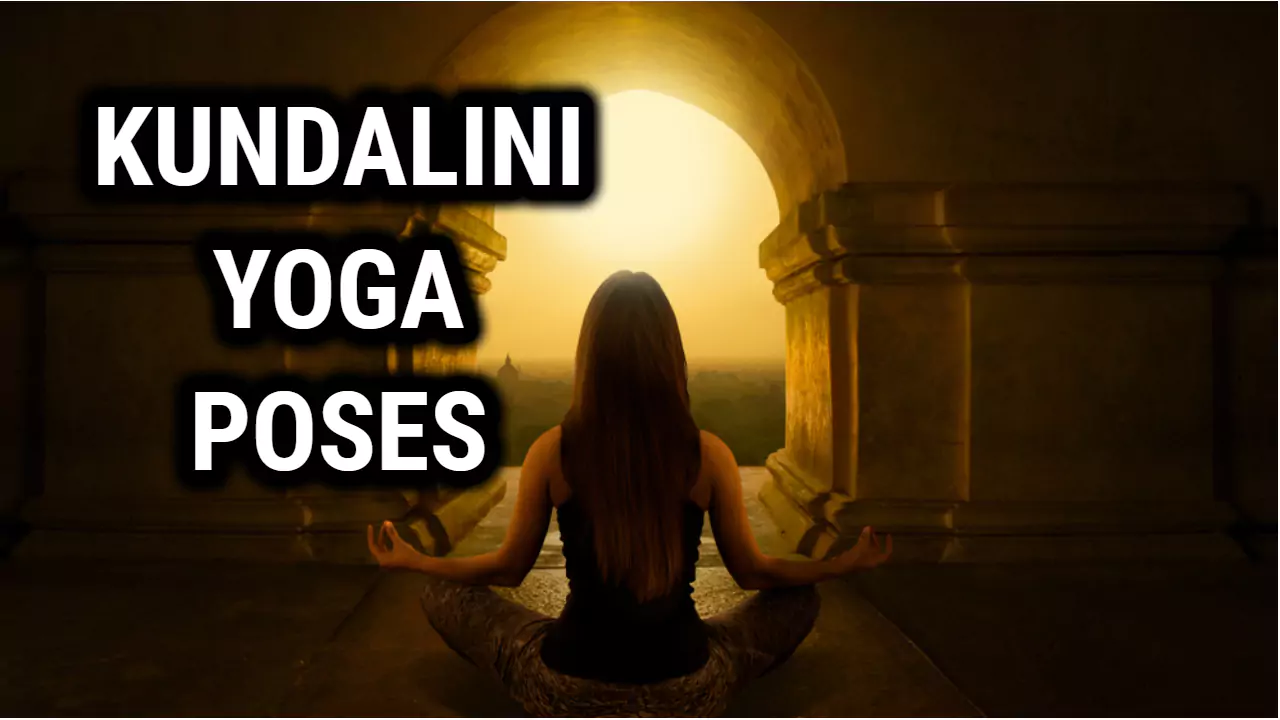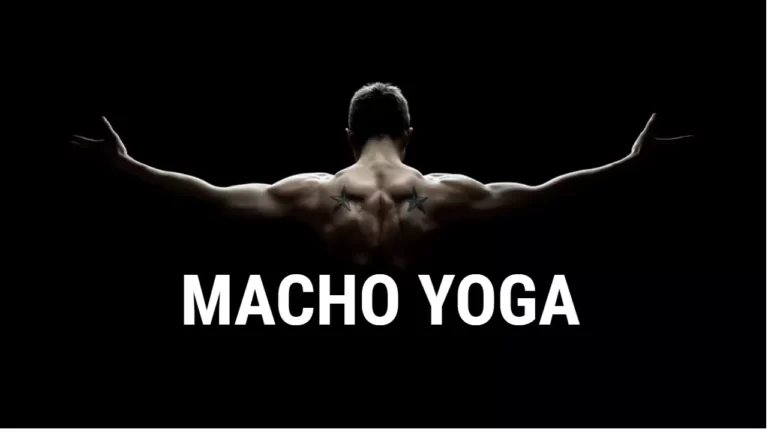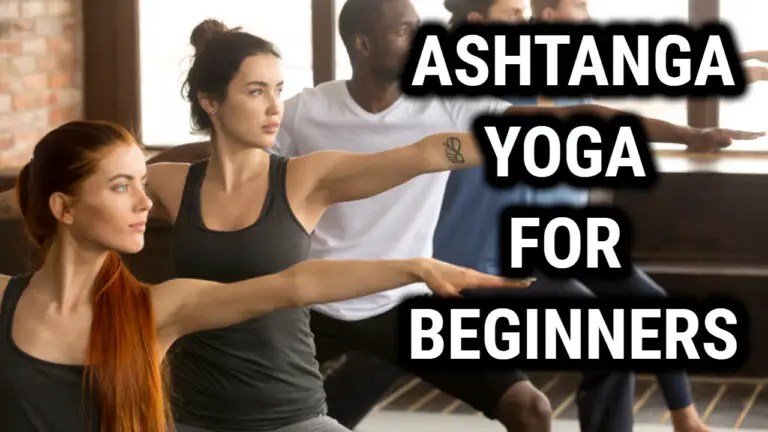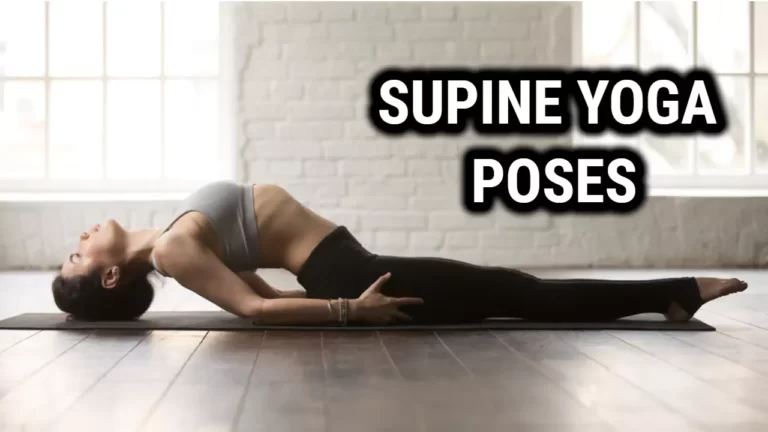Kundalini Yoga Poses: Awakening Your Energy

Kundalini yoga is a type of yoga that focuses on the release of energy that is coiled at the base of the spine. It is believed that through the practice of Kundalini yoga, one can awaken this energy and allow it to flow freely through the body, leading to a greater sense of well-being and spiritual awareness.
One of the key components of Kundalini yoga is the use of specific poses, or asanas, that are designed to help activate and balance the chakras, or energy centers, within the body.
If you are new to Kundalini yoga, it can be helpful to start with some beginner-friendly poses. Lotus pose is a basic seated pose that can help to open your hips and promote relaxation. Cat-cow pose is another gentle pose that can help to stretch your spine and improve your breathing. Downward-facing dog is a popular pose in many types of yoga, and it can be a great way to stretch your hamstrings and strengthen your arms and shoulders.
What is Kundalini Yoga?
Kundalini yoga is a spiritual form of yoga that combines physical postures, breathing techniques, meditation, and chanting to activate the Kundalini energy, also known as shakti, within the body. This energy is said to be located at the base of the spine and, when awakened, can travel up through the chakras, or energy centers, in the body, leading to a greater sense of awareness and spiritual connection.
Unlike other forms of yoga, Kundalini yoga places a strong emphasis on the breath, with many of the poses being performed in coordination with specific breathing techniques, known as pranayama. This helps to increase the flow of oxygen and prana, or life force energy, throughout the body, promoting greater physical and mental wellbeing.
Kundalini yoga is often described as a powerful and transformative practice that can help to awaken one’s inner potential and lead to a greater sense of purpose and fulfillment in life. It is suitable for practitioners of all levels, including beginners, and can be practiced both in a group setting or at home.
Benefits of Kundalini Yoga Poses
Kundalini Yoga is a form of yoga that focuses on the energy within the body. The practice of Kundalini Yoga Poses has numerous benefits for both the body and mind. Here are some of the benefits:
- Stress Relief: Kundalini Yoga Poses can help reduce stress and anxiety levels. The practice involves deep breathing exercises and meditation, which are known to calm the mind and reduce stress levels.
- Improved Flexibility: Kundalini Yoga Poses can help improve flexibility and mobility in the body. The poses involve stretching and holding different positions, which can help release tension in the muscles and improve flexibility over time.
- Increased Energy: Kundalini Yoga Poses can help increase energy levels in the body. The practice involves breathing exercises and movements that stimulate the flow of energy throughout the body, leaving you feeling more energized and rejuvenated.
- Better Focus: Kundalini Yoga Poses can help improve focus and concentration. The practice involves meditation and breathing exercises that can help calm the mind and improve mental clarity.
- Improved Digestion: Kundalini Yoga Poses can help improve digestion and relieve digestive issues. Certain poses can stimulate the digestive system and improve blood flow to the digestive organs, helping to alleviate digestive discomfort.
Overall, the practice of Kundalini Yoga Poses can have a positive impact on both the body and mind. By incorporating these poses into your regular yoga practice, you can experience the many benefits of this powerful form of yoga.
10 Essential Kundalini Yoga Poses
Kundalini yoga is a powerful practice that aims to awaken the dormant energy at the base of your spine. Here are ten essential Kundalini yoga poses that you can practice to help you achieve this:
| Poses | Benefits |
|---|---|
| Easy Pose (Sukhasana) | Calms the mind, strengthens the back, and opens the hips. |
| Camel Pose (Ustrasana) | Stretches the front of the body, opens the heart chakra, and improves digestion. |
| Cobra Pose (Bhujangasana) | Strengthens the back muscles, stimulates the digestive system, and opens the heart chakra. |
| Child’s Pose (Balasana) | Relieves stress and tension, stretches the hips and thighs, and calms the mind. |
| Bow Pose (Dhanurasana) | Stretches the entire front of the body, strengthens the back muscles, and stimulates the digestive system. |
| Shoulder Stand (Sarvangasana) | Stimulates the thyroid gland, improves digestion, and relieves stress and fatigue. |
| Plow Pose (Halasana) | Stretches the spine and shoulders, stimulates the thyroid gland, and improves digestion. |
| Downward-Facing Dog Pose (Adho Mukha Svanasana) | Stretches the hamstrings, calves, and spine, strengthens the arms and legs, and calms the mind. |
| Lotus Pose (Padmasana) | Improves posture, strengthens the back and core muscles, and calms the mind. |
| Corpse Pose (Savasana) | Relaxes the body and mind, reduces stress and anxiety, and promotes deep relaxation. |
Remember to listen to your body and only practice poses that feel comfortable and safe for you. Kundalini yoga is a powerful practice that can have profound effects on your physical, mental, and spiritual well-being.
Incorporating these ten essential poses into your practice can help you unlock the full potential of Kundalini yoga and awaken your inner energy.
Precautions to Take While Practicing Kundalini Yoga
Kundalini Yoga is a powerful practice that can bring numerous benefits to your body, mind, and spirit. However, it’s important to take some precautions to ensure your safety and avoid injuries while practicing. Here are some things to keep in mind:
- Warm up properly: Before starting any Kundalini Yoga session, it’s important to warm up your body properly. Spend 10-15 minutes doing some gentle stretching exercises to prepare your body for the more challenging positions in the intended kriya.
- Listen to your body: Kundalini Yoga involves holding postures for extended periods of time, which can be challenging for some people. If you feel any discomfort, pain, or strain in any part of your body, stop the practice immediately and rest. Do not push yourself beyond your limits.
- Breath consciously: Conscious breathing is an essential part of Kundalini Yoga practice. However, it’s important to breathe in a way that feels comfortable and natural for you. Do not force your breath or hold it for too long, as this can cause dizziness, lightheadedness, or other discomforts.
- Stay hydrated: Drinking water before and after your Kundalini Yoga practice is important to keep your body hydrated and prevent cramps or other dehydration-related issues. However, avoid drinking too much water during the practice, as this can interfere with your breathing and digestion.
Additionally, if you have any medical conditions, injuries, or physical limitations, it’s important to consult with your doctor or a qualified Kundalini Yoga teacher before starting the practice. They can provide you with personalized guidance and modifications to ensure your safety and comfort.
Mantras And Chanting
Mantras and chanting are an integral part of Kundalini yoga. Chanting mantras is believed to be an ancient practice, meant to balance one’s energies, bring about clarity of thought, and spiritual growth.
Through the use of mantra chanting during Kundalini yoga practice, practitioners can access a higher state of consciousness, allowing them to connect with their inner self.
Kundalini mantras are simple chants that offer healing power and protection against negativity. The most popular kundalini mantra is “Om,” which is used to represent the energy at the base of the spine when meditating. The chants allow practitioners to focus on their breath as they move through poses in yoga practice.
Yoga mantras can also be used for chanting meditation. This type of meditation helps practitioners clear their minds, relax their body, and focus on the present moment. By repeating a mantra over and over again, one can become more mindful and aware of the internal process happening within them. Chanting these mantras while practicing yoga allows practitioners to connect with their inner self even more deeply.
Yoga chanting uses sound as a tool for transformation, providing a powerful way for practitioners to deepen their connection with themselves and expand their awareness beyond physical movement or posture in order to explore greater depths within themselves.
Kriyas And Mudras
Kriyas and Mudras are a vital part of the practice of Kundalini Yoga. They are powerful tools for spiritual awakening and navigating through one’s yoga practice. Kriyas are cleansing practices that involve specific postures, movement, breathing, and sound vibrations to help balance the energy flow in the body.
Mudras are hand gestures that create subtle energetic shifts in the body to enhance one’s yoga experience.
Kriyas and Mudras work together to bring about profound physical and mental transformation. With regular practice, kriyas can assist with purifying the physical body by eliminating toxins and restoring balance.
Mudras help to open up energy pathways, allowing for greater circulation in the body and calmer state of mind. Both can be used in conjunction with other traditional yogic techniques such as pranayama (breathing exercises) and meditation for enhanced benefits.
The combination of kriyas and mudras is an incredibly potent way to access deeper realms of consciousness, leading to physical clarity and emotional healing on all levels. Through these ancient practices, we can develop a stronger connection to our inner truth while reaping numerous physical, mental, emotional, and spiritual rewards. With dedication, commitment, and an open heart, anyone can embark on this journey of self-discovery to uncover their own hidden potentials.
Also Read: Kneeling Yoga Poses: Improve Flexibility and Strengthen Your Body
Bandhas (Energetic Locks)
Kundalini yoga incorporates a practice of energetic locks, known as bandhas. These energy locks are used to control the flow of prana or life force energy in the body. There are three primary bandhas in kundalini yoga: maha bandha (the great lock), uddiyana bandha (upward flying lock), and mula bandha (root lock).
Maha Bandha is an all-encompassing energy lock that activates all three other bandhas. It engages both the physical and mental aspects of the body to allow for a deeper experience of prana while practicing kundalini yoga. To perform this powerful energy lock, one should first sit in a comfortable position with their spine erect and relax their entire body.
Uddiyana Bandha is an upward flying energy lock that stimulates digestion and breathing while creating a strong connection between the physical and spiritual bodies. This bandha can be performed by standing with feet hip-width apart, exhaling completely, contracting the abdomen muscles upwards toward the heart and then drawing them up towards the ribcage. The breath should remain suspended until it is necessary to inhale again.
Mula Bandha is considered to be one of the most important energetic locks in kundalini yoga. It helps to awaken kundalini shakti within us by stimulating our deepest reserves of pranic energy within our root chakra. Performing Mula Bandha requires focusing on contracting your pelvic floor muscles for several moments before releasing them again through exhalation.
The practice of these three main energies locks can help practitioners to increase their awareness, gain better control over their breath, improve digestion, balance hormones, open up blocked chakras, and deepen their meditation practice overall. Through regular practice of these powerful techniques, one can learn how to connect more deeply with their inner being and achieve greater insight into life’s mysteries.
Adaptations For Different Levels Of Experience
When first starting out in kundalini yoga, it can be intimidating to think about the various poses and their intense effects on the body. However, it’s important to understand that there are adaptations available for all levels of experience. From beginner poses to advanced poses, those new to this form of yoga can find a comfortable starting point and gradually work up to more complex routines.
For beginners, simple adaptations of postures can help them ease into their practice without feeling overwhelmed or causing undue stress on their bodies. For example, for those just starting out, modifications such as placing the knees or hands on blocks or bolsters can make a pose less strenuous. Additionally, if a full posture is too much, holding part of the pose such as half-way up will still provide some benefit while also allowing a gradual build-up in strength and confidence.
Intermediate and advanced poses require more focus and control over one’s body movements. To make these poses more attainable at different levels of experience, certain techniques such as Uddiyana Bandha (stomach lift) and Mula Bandha (root lock) help create stability and length in the spine which can then be used to deepen into more difficult postures safely and effectively.
Kundalini yoga is a powerful practice that comes with many benefits; understanding how to modify poses based on individual ability is an important part of achieving these benefits without risking injury or overexertion. With these modifications available for every level from beginner through advanced, practitioners can move forward in their kundalini journey with confidence.
Related Read: Postnatal Yoga Poses: Gentle Exercises to Help New Moms Regain Strength and Flexibility
Conclusion
Kundalini Yoga is a powerful practice that combines physical poses, breathwork, meditation, mantras and mudras to awaken the kundalini energy within us. Practicing regularly can help us to access our inner power and transform our lives in profound ways. It’s like lighting a spark inside of us one that can energize our body and soul, ignite our creativity, and help us align with our highest potential.
Kundalini Yoga is an amazing tool for self-exploration and growth, and I encourage everyone to give it a try. Even if you don’t feel like you have any experience or knowledge of the practice, there are plenty of adaptations available so you can start at your own level. With consistent effort and dedication, you can unlock your inner power and open yourself up to a world of possibilities.
Just like a seed needs water to grow into a flower, Kundalini Yoga requires commitment from us in order to manifest its fullest potential. So don’t be afraid to take the plunge the rewards are worth it.





